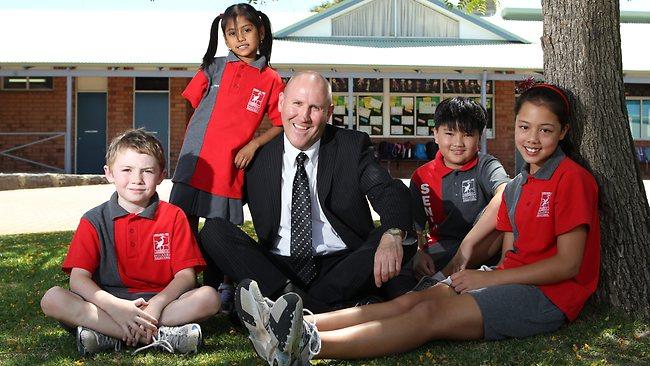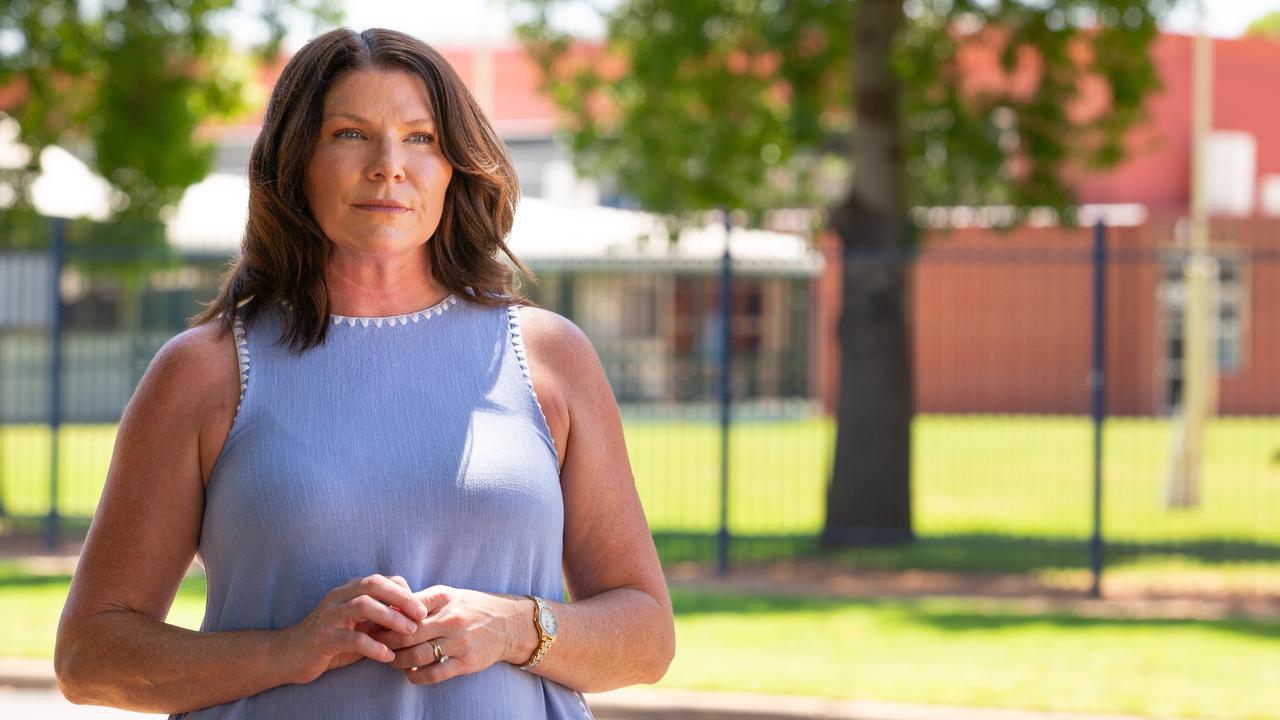Improve the teachers, help the kids
WHEN David Wanstall arrived as the new principal at Ballajura Primary School in Perth six years ago, he found a below-average school.

WHEN David Wanstall arrived as the new principal at Ballajura Primary School in Perth six years ago, he found a below-average school he believed could perform a whole lot better.
"I think we had cajoled ourselves into believing 25 per cent of our kids couldn't read at a functional level and that was OK," Mr Wanstall said.
"What we now understand is that every child can learn to read."
About 30 per cent of Ballajura's students were failing to meet minimum national standards in literacy and numeracy; today it's as low as 3 per cent and the proportion of students scoring in the top 20 per cent of the nation has at least doubled in the past three years.
Mr Wanstall said the school's rapid improvement came from the adoption of effective and explicit teaching strategies, and teachers having high expectations of their students, starting from the premise that every child could learn.
The turnaround came with the help of Melbourne private school Haileybury, which effectively has established its own teacher training institute, the Haileybury Institute, led by deputy principal John Fleming.
Mr Fleming spends four weeks in every term travelling around the country, working with more than 100 mostly government schools, coaching their teachers in using strategies to improve students' skills. Ballajura was the first school outside Haileybury that he helped.
The results nationwide have been phenomenal. Mr Fleming cites the example of one of South Australia's lowest achieving schools at Whyalla, where only 26 per cent of its Year 3 students met the minimum numeracy standard in 2010.
This year, 93 per cent of the Year 3 class met the minimum standard, a rise Mr Fleming said reflected the improvement in the teaching.
Mr Fleming comes to the schools with runs on the board. As principal of Bellfield Primary School in Melbourne's northern suburbs, he took one of the most disadvantaged schools in the state from the bottom of student results to the top.
"The first thing I say to schools is we're aiming to be among the best schools in Australia, we're not aiming for national minimum benchmarks," he said.
"We remove all the excuses. Many schools will tell you: 'But we have indigenous kids, or we have transient kids, or disadvantaged kids'. You quickly get rid of that.
"What we have failed to do in Australia is give teachers the tools that eliminate the excuses."
Mr Fleming said the biggest problem was the lack of continuity in teaching, which research said was essential for success.
"You need to have a structured, sequential, skills-based curriculum," he said. "In some schools, individual teachers are doing it but they don't have it across the whole school. That's my aim."
Mr Fleming gives teachers a structure for their lessons, distilled to three short phrases: I do, we do, you do. Every lesson starts with a warm-up to consolidate skills, followed by the teacher demonstrating the skill, practising it with the class to check for understanding, and then the student practising on their own.
"Teachers want to know exactly what to do," he said. "You can't just tell them improve spelling, tell them the activities to do in the classroom."
Mr Fleming said it was not the fault of teachers; rather the ineffective training in their education degrees that was not based on the evidence of what works.
Haileybury principal Derek Scott said the institute grew out of Mr Fleming's work at the school, which proved effective with students across its three quite different campuses. "We felt we had something that was best practice in education and there was an opportunity to share that with schools around Australia," he said.
"Teachers really like it, it gives kids clear structures and focus, the results are strong and they see improvement in their performance very quickly. It's popular because it's effective."
The program also fits in with Haileybury's commitment to social justice, and many of the schools are assisted on a pro-bono basis, with education departments helping cover costs in some cases.
Ballajura was where it started. After making some cultural changes to the school, which had a reputation for bullying, Mr Wanstall and Jane Schorer, now assistant principal in charge of curriculum, searched the nation for a program to lift students' skills. Ms Schorer bumped into Mr Fleming at a presentation and the school found the clearly articulated recipe for change it was searching for.
While previously teachers acted as islands, making their own way, Ms Schorer said now there was a consistency throughout classrooms, with teachers working from a prescribed curriculum.
Student data is analysed and progress tracked against goals that are set for each term.
Of the 60 students accepted into the academic selective stream at the local high school, more than half were Ballajura pupils. But Mr Wanstall isn't satisfied yet. "Three years into our journey and I still think we are significantly under-performing," he said. "Kids will go to the bar you set for them whether it's a high bar or a low bar. It's about changing teachers' perceptions of what children are able to achieve."


